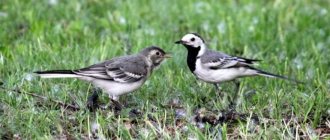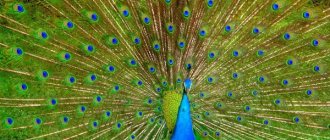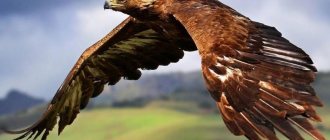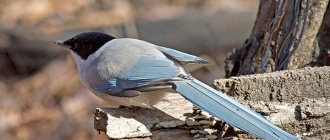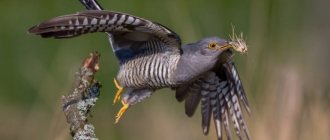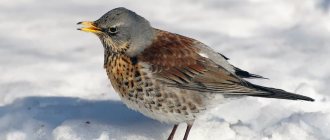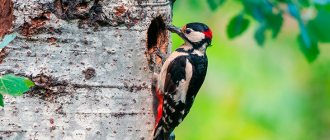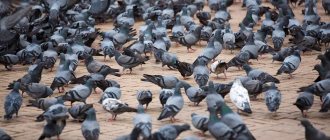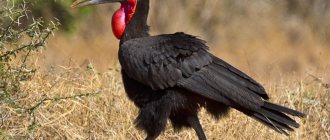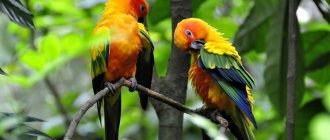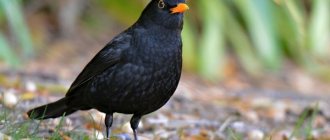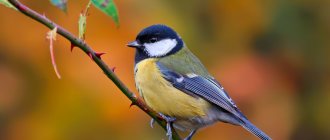Oystercatcher
Latin name
– Haematopus ostralegus
English name
— Eurasian (Common pied) oystercatcher
Order Charadriiformes
Oystercatcher family
This sandpiper received its Russian name for its black and white coloration, which is really similar to the coloration of the magpie. And his behavior is somewhat reminiscent of a magpie: just as loud and noisy. And the English name translates as “shell catcher,” which is due to its feeding behavior.
The center of origin of the oystercatcher family is likely to be the New World, since the earliest fossil remains of these birds were found in North America.
Species and man
The oystercatcher is of no hunting interest to humans, so it can get shot either by accident or because of its very annoying cry, which can infuriate hunters of other animals. When choosing a nesting site, it sometimes settles near human buildings, and there are cases when oystercatchers nested in fields and roofs of buildings.
However, some populations of these waders suffer from the loss of nesting sites due to human economic activities: the construction of dams, regulation of river flows and other reclamation works.
In the Faroe Islands, the oystercatcher has been declared the national bird.
Keeping at home
Magpies are a genus of birds that can be kept at home. They are relatively unpretentious, smart, quickly get used to people and do not create any special problems.
Requirements for cages and enclosures
A cage for a domestic magpie should be durable, with metal rods, and in the shape of a parallelepiped. The bird will be comfortable in it, and the owner will not have any difficulty maintaining cleanliness. Requirements:
- The gap between the rods is 2-3 cm.
- Length - 80 cm, width and height - 50 cm each.
- Secure doors to prevent birds from opening them.
An aviary is desirable for keeping this restless bird at home. It can be installed in the courtyard of a private house or in the attic. A metal mesh with a fine mesh is used for fencing.
Note! It is important that there are no small holes in the design - they can cause injury to your feathered pet.
Reproduction, nest, chicks
As in the wild, the mating season for magpies begins in the last days of February, at which time the birds begin building new nests or repairing old ones.
Nests are located at a sufficient height, so it is important to provide birds with this opportunity. And also provide materials - flexible twigs, dry branches, clay.
The clutch of a house magpie contains 6-8 eggs, small in size, in a green shell covered with brown spots. The appearance of magpie chicks occurs on the 19th-20th day; they are born without feathers, but thanks to the very good care of their parents, the mortality rate is minimal. At the age of 1 month they become independent.
Picture 6 - If desired, the bird can be kept at home; it is smart and quickly remembers the rules of behavior.
Diet in captivity
When considering what magpies eat in captivity, one should take into account the peculiarities of the diet of corvids in their natural environment. Birds are predators and gatherers, so they need animal and plant food. Your pet's diet should include:
- Feeding insects (grasshoppers, crickets, mealworms, beetles).
- Small forage poultry (quail carcasses, chickens are allowed, but their composition is less healthy).
- Rodents (rabbits, rats, mice), since in the wild the magpie preys on them.
- Berries grown in the region of residence, fresh and dried.
- Nuts and acorns are necessary - they help magpies wear down their beaks naturally.
- Clay is an essential component of the white-sided fish's diet.
Note! For house magpies, calcium in the diet is very important, otherwise problems with bones and heart cannot be avoided.
Spreading
Inhabits the sea coasts of Europe from Scandinavia and Iceland to the Mediterranean, as well as the coasts of the Far East and the Yellow Sea. Several subspecies of oystercatchers stick to the interior regions of Eurasia, occupying pebble and sandbanks along the banks of rivers in forest and forest-steppe zones, and even deserts in Central Asia.
In our country, it nests along the shores of the Barents, White and Baltic seas, on some rivers of the European part and Western Siberia, as well as on the Amur and on the coast of Kamchatka and Primorye.
Over most of their range, oystercatchers are migratory birds. However, in north-west Europe, some birds remain in winter on their breeding grounds, forming mixed flocks with waders arriving from Iceland, Scandinavia and north-west Russia. Another part of the oystercatchers moves south to the shores of the Iberian Peninsula and southern Europe, and some cross the Mediterranean Sea and reach North Africa. Populations from the central regions of Eurasia are long-distance migrants and fly to eastern Africa for the winter.
Due to the fact that the range of the species is very extensive, birds living in different parts of it differ in appearance (color, length of beak, wing and paws), so about 17 subspecies are currently recognized. Of these, oystercatchers from Kamchatka have the longest beak (beak up to 10 cm), and the European marine subspecies has the shortest (8 cm) and high beak.
Appearance
Compared to other waders, the oystercatcher is a fairly large bird - about the size of a crow or slightly smaller. Body length is 40-47 cm, weight in different populations is from 420 to 820 g, wingspan is 80-86 cm. The general color of the plumage is contrasting - black and white. The eyes are orange-red, the beak and legs are bright red. Hence the Latin name of the genus – “bloody-footed”.
Adults in autumn feathers and young birds are duller in color.
Females are slightly larger than males and have longer bills.
Oystercatchers fly beautifully, run fast and swim very well.
Description and features
Waders are included in the order Charadriiformes, which unites 6 families. Based on their habitat, birds are divided into groups of forest, swamp, mountain, and sand. Despite their diversity, shorebirds are united by distinctive features clearly identified by ornithologists.
Most birds are associated with water and live along the banks of rivers, lakes, and swamps, although among the waders there are representatives of the desert - avdotki, and forest thickets - woodcocks.
Pictured is a wood sandpiper
The general appearance of the sandpiper resembles the outline of a pigeon with long legs for walking in shallow water and sticky soil. But there are also short-legged representatives (lapwings, snipes).
There are three toes on the feet, the development of the fourth is weak. If the bird is a waterfowl, then the bases are connected by membranes. The body is dense. The tail is short and never points upward. Some birds swing it when they walk.
The sandpiper in the photo can be in different outfits. The color of most is modest and discreet. The predominant colors are white, red, black, and gray. There are exceptions - brightly contrasting plumage and legs of yellow and red colors, for example, oystercatchers and turkukhtans. The outfits of males and females are practically the same. The sandpiper changes its plumage twice a year.
Sandpiper is a wading bird . The long beak and excellent sense of touch help extract food from the slushy mass. Good vision and hearing contribute to the activity of birds at night.
The method of extracting food is associated with the shape of the beak bend - down, up or sideways. Many receptors help obtain food. With its main tool, the bird is able to move a stone to search for a mollusk, the weight of which is not inferior to its own. The wings are usually long and sharp.
The appearance and size of waders vary significantly. The length of the birds varies in the range of 15-62 cm, weight can be from 200 g to 1.3 kg. All waders are excellent runners, and most birds can swim well. The adaptation of birds to different climatic conditions contributed to their widespread settlement in various land areas, except Antarctica.
The main enemies of waders in nature are birds of prey. The approach of a falcon creates panic, which manifests itself in loud screams and diving. In shallow water there is no salvation for waders. Chicks often become prey to crows, buzzards, martens, and arctic foxes. Skuas steal eggs from nests.
In some species of sandpiper, females have different plumage from males.
Nutrition and feeding behavior
They feed on mollusks, crustaceans, marine polychaete worms (they are called polychaetes), aquatic or semi-aquatic insects. They obtain food by wandering along the shore or in shallow water, examining and turning over each stone, looking into the cracks between them, and often probe the soft muddy soil, looking for edible objects by touch. Oystercatchers deftly open the shells of bivalve mollusks by inserting their laterally compressed beak between the valves and using it to cut the adductor muscle of the mollusk. As a result of these manipulations, the beak noticeably wears down, but when the birds seasonally switch to other foods, it grows again.
Oystercatchers can fish, but do so reluctantly, only in the absence of more familiar food.
Reproduction and parental behavior
The oystercatcher begins nesting soon after returning from wintering grounds, in April-May. Each pair (and the pairs of these waders are permanent and last a lifetime) occupies its own site from last year, and even the nest site often remains the same. Pairs break up very rarely, mainly due to competition for a nesting site or in the event of the death of one of the partners.
Mating games or mating displays are well expressed in oystercatchers. Males walk on the ground or fly in circles, with their beaks lowered and their necks extended, and call loudly.
The nest is usually located in a shallow hole among pebbles, sometimes under a hummock, sometimes completely open, close to the water. The nest tray is lined with a small amount of dry grass, pebbles, and shell fragments. The clutch contains from 2 to 4, but most often 3 eggs, which have a protective color (dark spots on a light background). The interval between the laying of each egg is at least a day, i.e. From 1 to 3 eggs it takes 2-3 days. Incubation begins with the laying of the first egg, but the chicks hatch only a few hours apart, suggesting that the last eggs take less time to develop than the first. In general, incubation lasts 26-27 days. Both parents incubate, often replacing each other. In case of loss of clutch (from predators or high tides), the birds lay again.
The hatched chicks are covered with grayish down with dark streaks, which makes them completely invisible against the background of the shore. Their beak and paws are not red, but grayish, and their eyes are dark. The entire brood stays together in its nesting area, the adults still guard it, and the chicks hide when in danger. Adults feed the chicks by passing food from beak to beak or by throwing it on the ground in front of them. The oystercatcher is the only sandpiper that can carry food in its beak. Oystercatcher chicks can not only swim well, but also dive well. According to some reports, they can swim several meters underwater. The process of feeding the young lasts about 1.5 months, after which the chicks begin to fly.
Mortality among oystercatcher chicks is quite high; often up to 2/3 of the chicks die in the first days.
Lifestyle and habitat
The ubiquitous shorebirds live on all continents except Antarctica. These are gregarious birds, gathering up to several thousand individuals. Most waders are nomadic, although there are also sedentary representatives.
Which birds are migratory or not is determined by their habitat and wintering grounds. A drop in temperature and a lack of usual food forces waders to leave their usual places. Almost all of them migrate long distances from their native places.
Without stopping, waders can cover a distance of up to 11,000 km, flying over mountain ranges, deserts, and water areas. The inhabitants of Siberia fly to Australia for the winter, and fly from Alaska to southern Argentina.
During migration, flocks of waders form mass aggregations on certain sections of the coast. There the birds find food to gain strength for long journeys.
In Russia, different species of waders are found everywhere. The Far East is inhabited by plovers, woodcocks, and lapwings. In Primorye there is a nesting place for godwits, the coasts of mountain rivers are the homeland of Ussuri plovers.
Waders not only fly well, but also run on the ground, swim, and dive. Many species of shorebirds can be tamed. Active and sociable, they take root well in captivity and get used to homemade food.
They adapt to a new environment, are not afraid of humans, and feel and respond to care. Attempts to preserve rare waders listed in the Red Book are complicated by the difficulty of breeding them.
